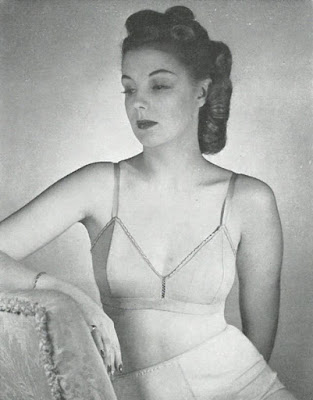"The bottom half of the female body also went through a sequence of re-imaginings, from the suspender (US garter) belt, to what was euphemistically called girdles. These were all pretty grim, as I remember them in the UK, tight elasticated tubes we called 'roll-ons' worn between waist and thigh, hot and sticky in summer, clammy and cold in winter."
Rosalind Miles "Rebel Women" (2020)
The fashions of the 1950s looked glamorous, but what went on underneath was hard work. Here we have a catalogue page full of bras wired and seamed to "lift and separate" (and point!) the wearer's breasts, and girdles to flatten tummies and whittle waists. Advertisers liked to stress the comfort of these garments, but even a cursory glance indicates that they were anything but.








